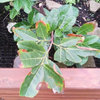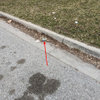These guys are invading my broccoli/radishes... are they cutworms
Prachi
11 years ago
Ok this is not the best pic sorry... but I usually find at least 1 or 2 of these guys in my fall garden eating my broccoli and radishes. Every so often I will find large numbers of these guys.... ~10 or so... today was one of those days.
My brocoli is nonexistent because they have eaten them up... I am so annoyed!
I've read that I can spray bt?? on them.. I'd rather not spray chemicals if I don't have to...





rhizo_1 (North AL) zone 7
ken_adrian Adrian MI cold Z5
Related Professionals
Danbury Landscape Architects & Landscape Designers · Garden City Landscape Architects & Landscape Designers · Tomball Landscape Architects & Landscape Designers · Athens Landscape Contractors · Cupertino Landscape Contractors · Fort Payne Landscape Contractors · Glendale Heights Landscape Contractors · Lemoore Landscape Contractors · Marlborough Landscape Contractors · Point Pleasant Landscape Contractors · Salmon Creek Landscape Contractors · West Coon Rapids Landscape Contractors · Raytown Landscape Contractors · Chesapeake Ranch Estates Stone, Pavers & Concrete · Centerville Stone, Pavers & Concreterhizo_1 (North AL) zone 7
PrachiOriginal Author
rhizo_1 (North AL) zone 7